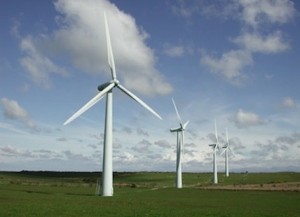In his Kazakhstan 2050 strategy, President Nursultan Nazarbayev called on the people of Kazakhstan to rethink their attitudes toward natural wealth. The Concept for Transition to a Green Economy and holding EXPO 2017 both give Kazakhstan a unique opportunity to diversify its national economy, introduce clean technologies and preserve its natural wealth. This opportunity also means Kazakhstan can integrate green principles in strategic planning, taxation and national statistics. Director of the Green Academy Research and Education Centre Bakhit Yessekina spoke on some aspects of this work. 
“The Green Academy was established in June of this year at the initiative of the Ministry of Environmental Protection. Its objective is to provide information-analytical support for the Concept for Transition to a Green Economy and educate heads of government agencies, national companies, the business sector and nongovernmental organisations. Technical and financial assistance in organising the centre was provided by the Network of Experts for Sustainable Development in Central Asia (NESDCA), the Global Green Growth Institute and the Economic and Social Commission for Asia and the Pacific (ESCAP),” she said.
Green countries, such as South Korea, Germany and Sweden, maintain a network of think tanks engaged in educational activities in key areas of the green economy and sustainable development. Therefore, the creation of such a centre in Kazakhstan, the first in the post-Soviet space, clearly demonstrates the intention of the country to modernise its economic system to be based on innovative principles of the green economy, she added.
According to Yessekina, today, it is clear that an economy based only on the use of natural resources cannot be competitive in the long term. The recent master class with Jeremy Rifkin in Astana revealed a mixed public perception about the purposes and principles of green transformation.
The concept of the Third Industrial Revolution (TIR), formulated by Rifkin, involves five pillars of development: renewable energy sources, including solar, wind, hydro, geothermal, ocean waves, biomass and others; the construction of buildings which themselves generate electricity; the use of hydrogen and other technologies for energy storage and the use of smart grid or intergrid technology and an energy Internet.
Well-known German companies such as Siemens, Bosch and Daimler are working today on new information technology programmes, computers and devices that will integrate Internet communication; the power grid and electric, hybrid and other vehicles, including those working on fuel cells, Yessekina explained.
“All these pillars entail the search for new technologies and sources in order to form a mental model of the new economy, allowing for the preservation and enhancement of natural capital and improving the quality of people’s lives, especially those of vulnerable populations, which corresponds to the basic principles of the green economy,” Yessekina continued. “Rifkin, counsellor to the European Union on the economy, climate change and energy security and adviser to a number of governments and companies, pointed out in his speech the uniqueness of Kazakhstan’s natural and human capital and the country’s ability to become a hub or a bridge of the TIR in Asia. However, this requires fundamental changes in the country’s pattern of production and consumption, improving the environmental management system and, of course, a shift in the culture and consciousness of top managers of national companies and business structures.”
“Unfortunately, in our society there is a strong belief that the transition to a green track will slow down economic growth and lead to the strict conservation of natural resources,” Yessekina lamented. “But the experience of developed countries like Germany, Norway, Sweden, South Korea and others shows that the green economy provides sustainable economic growth based on innovation as it facilitates the transition to a smart intellectual economy by finding ways to efficiently use and conserve natural resources (especially non-renewable natural resources) and develops human potential through significant investment in science and education.”
“For example, in September of this year, during the Geotechnology 2013 International Scientific and Practical Conference, we held a pilot workshop for subsoil-using enterprises,” she further explained. “We familiarised participants with key points of the Concept for Kazakhstan’s transition to a green economy, the mechanisms of enterprises’ participation in trading emissions and international experience in waste management. A similar workshop was held at the request of Kazakhmys Corporation as well as for the workers of the Astana EXPO 2013 company. In the future, we plan to conduct a series of training seminars in the regions for both the public and private sectors.”
The main goals and objectives for the transformation of our economy by 2020 are defined in the Concept for the transition and the action plan for its implementation. A great help in the development of Kazakhstan’s green economy is the process of preparing for EXPO 2017 in Astana. According to Rifkin, the exhibition could become “the valley of the biosphere” or an area of development of the TIR, which will distinguish it from previous exhibitions. According to him, the construction of 80 percent of buildings in Kazakhstan in 2013-2030 will be based on green technologies.
“The green economy has huge potential for development, as it provides economic growth not through the use of natural resources, but through innovation, which will ultimately result in improved quality of life,” Yessekina maintained. The expected economic effect is presented in the Concept in the form of indicators characterising economic growth, reduction of energy use, fewer water shortages, job creation and others.
“But in addition to economic growth and saving natural resources, Kazakhstan will rise to a new level of innovation by mobilising internal inexhaustible sources of development that will ensure competitiveness in the long term,” the researcher believes.


